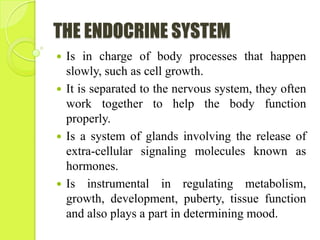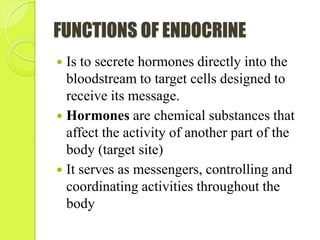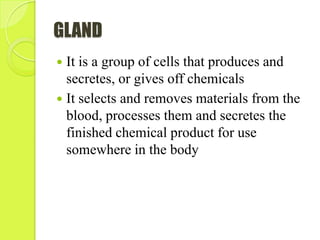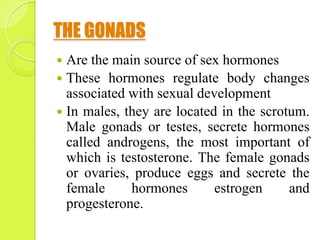The endocrine system regulates processes like growth, metabolism and reproduction through glands that secrete hormones directly into the bloodstream. It includes major glands like the pituitary, thyroid, pancreas and adrenals. The pituitary is called the "master gland" as it controls other glands by producing hormones like growth hormone and thyroid-stimulating hormone. Too little or too much of any hormone can cause disorders, but controlling hormone levels through medication can treat conditions like diabetes and thyroid disorders.





















